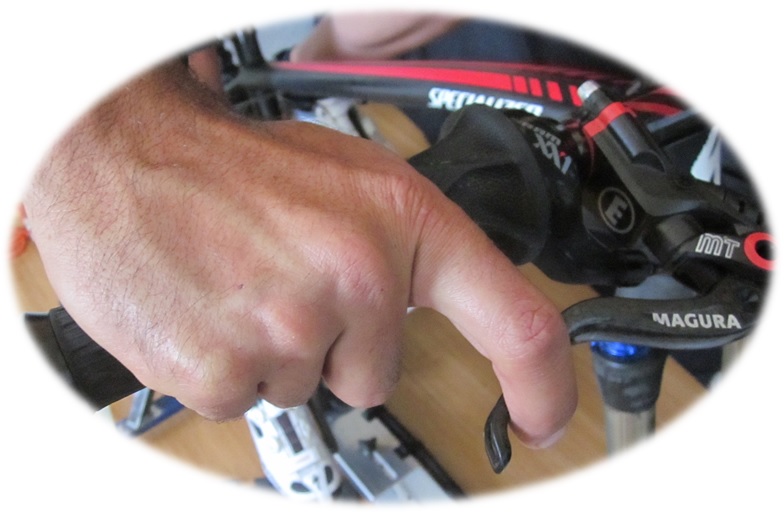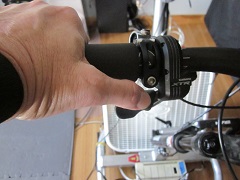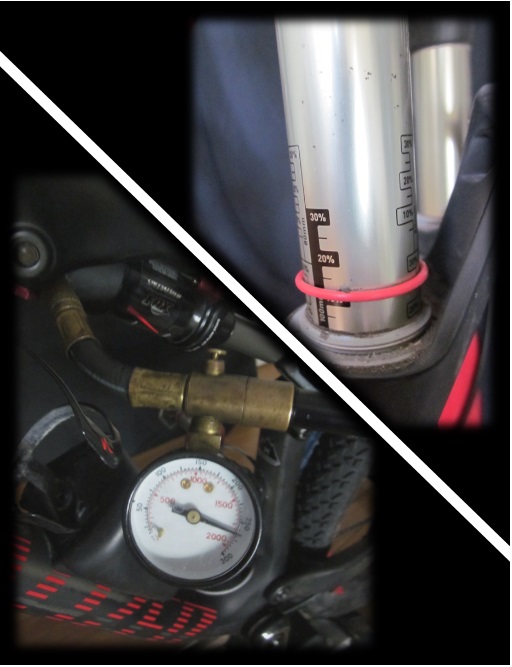How long ago did you start
hearing about people getting fitted on a mountain bike?
Until recent past, many
mountain bikers resisted the notion of bike fitting for mountain
bikes, relegating it to the roadies: "I move too much around
in the saddle for fitting to make a difference for me". We
heard this rationalization a lot.
But
mountain bike fitting is more important precisely because a
mountain bike rider moves around and needs to be optimized for
multiple positions while in critical performance situations.
The location of the Center of
Gravity (CG) - as it relates to the bottom bracket - and the
weight distribution on the front and rear wheel are a key
performance parameter. They affect how a mountain bike will
handle under your command.
Those two parameters drive the
bike fitting protocol when it comes to saddle position and
handlebar reach.
How?
WHAT'S SPECIAL ABOUT MOUNTAIN BIKE FITTING
Mountain bike fitting is the
most involved and complicated bike fitting protocol of all.
That's because it involves handling as the primary
outcome of the bike fit.
 As compared to Road and Tri
bike fitting, where the most consideration is given to finding
a single position that generates the most power and the best
aerodynamics, mountain bike fitting must carefully integrate and
balance a power-based position against the weight
distribution front to As compared to Road and Tri
bike fitting, where the most consideration is given to finding
a single position that generates the most power and the best
aerodynamics, mountain bike fitting must carefully integrate and
balance a power-based position against the weight
distribution front to rear, the position of the
Center of Gravity (CG) and the ease of handling
the components of the
steering (i.e. the handlebar reach, stack and cockpit controls
like shifters and brakes) to overcome obstacles. rear, the position of the
Center of Gravity (CG) and the ease of handling
the components of the
steering (i.e. the handlebar reach, stack and cockpit controls
like shifters and brakes) to overcome obstacles.
It also has to deal with
generating traction in critical and often-time precarious
situations like steep climbs in loose terrain.
 When you add to the mix the
fact that front suspension forks and rear suspension shocks,
dropper seat posts and a variety of suspension settings can
alter not only the rider's position, but also the geometry of a mountain
bike (flip chips, suspension chips, etc.), you have the reason why most bike fitting professionals
shy away from mountain bike fitting. When you add to the mix the
fact that front suspension forks and rear suspension shocks,
dropper seat posts and a variety of suspension settings can
alter not only the rider's position, but also the geometry of a mountain
bike (flip chips, suspension chips, etc.), you have the reason why most bike fitting professionals
shy away from mountain bike fitting.
It really does take a vast
amount of knowledge and experience to fit mountain bikes. And it
might explain why mountain bikers struggle finding a qualified
bike fitter that is willing and able to do the work.
MANY BIKES, MANY BIKE FIT PROTOCOLS
To further add to the
complexity of mountain bike fitting, there are many
different types of mountain bikes, each specific to an
application - how you use the bike.
A bike is designed to do a
specific job. It has a design point for performance that
the engineers have optimized for its use. The interaction with
the cyclist aboard must respect this or suffer performance loss.
Mountain biking requires you to
pedal at many different RPMs and under a wide range of loads.
Bike fitting for mountain biking must allow for the ideal power
output while embracing the the nature of the bike geometry.
Mountain
biking fit protocols must be designed around each
specific application:
-
Cross Country:
-
Trail:
-
All mountain:
|